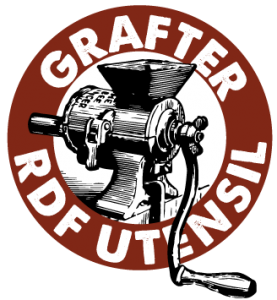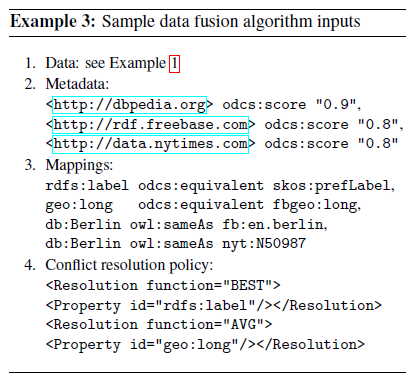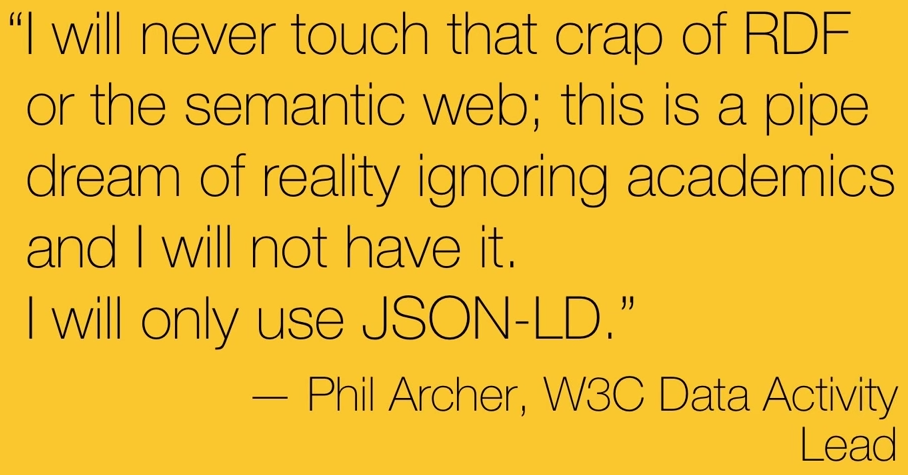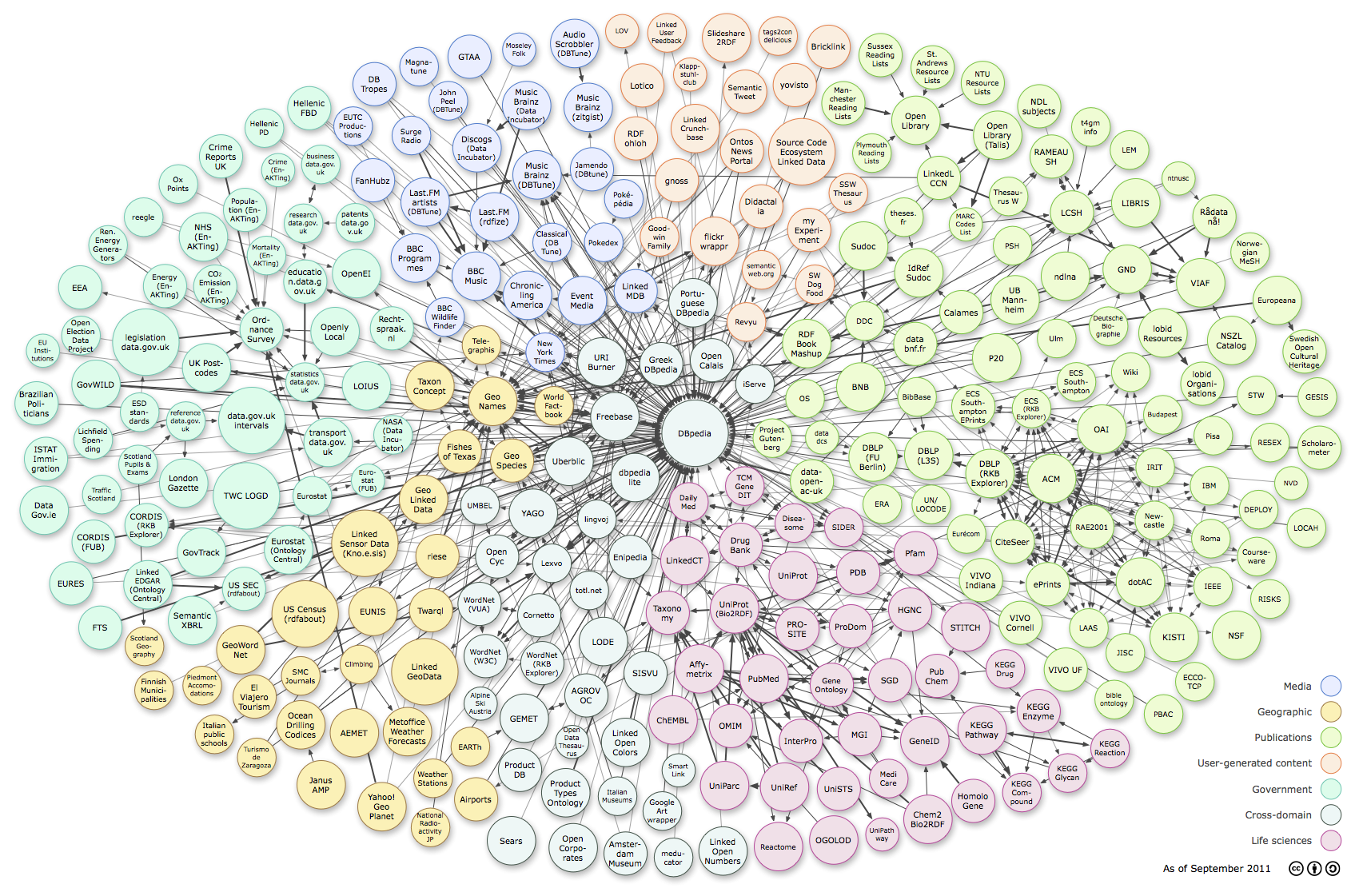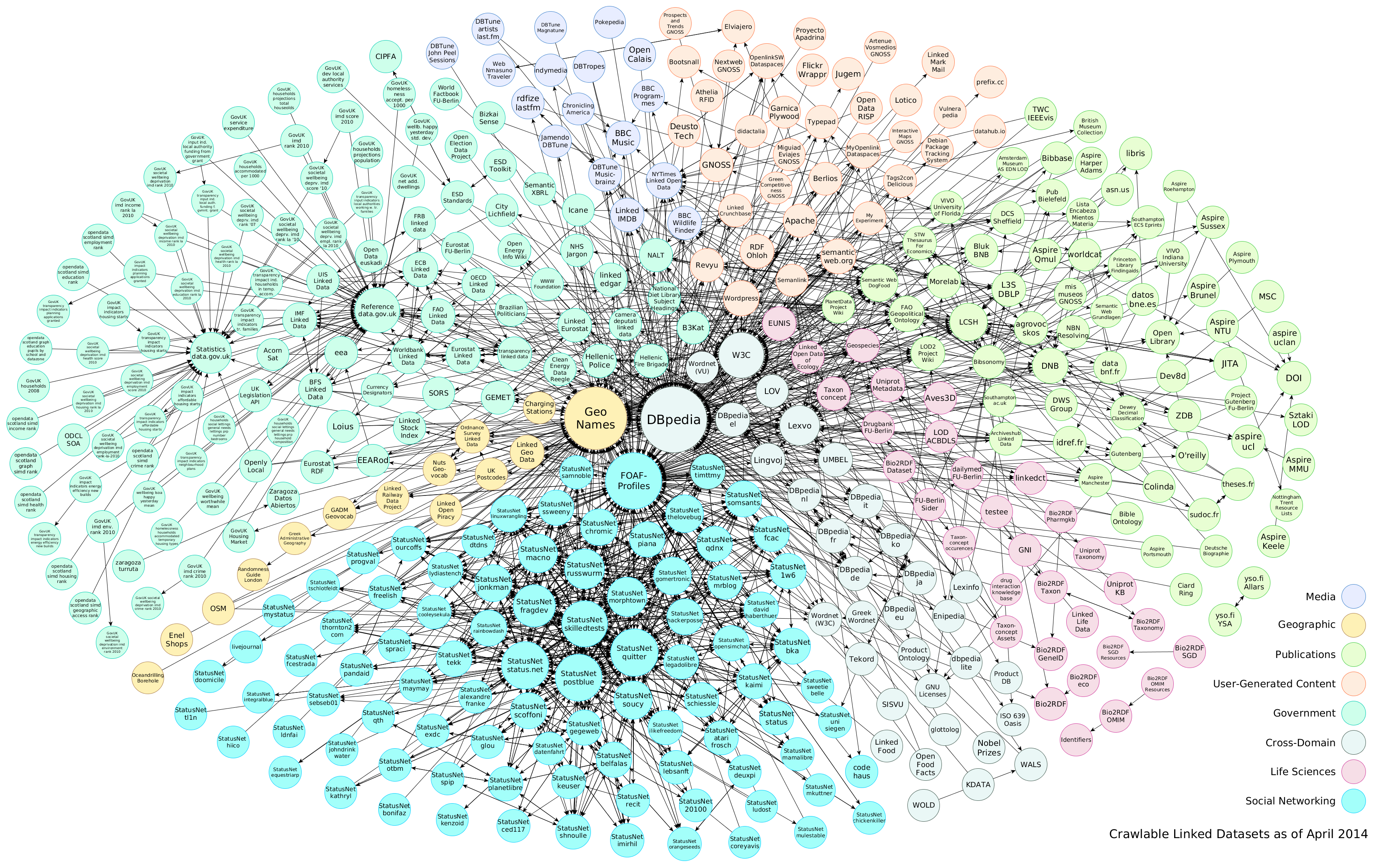A recent email from the organizers of DeSemWeb2017 reads:
Below are 14 contributions on the topic of decentralization and Linked Data. These were shared in reply to the call for contributions of DeSemWeb2017, an ISWC2017 workshop on Decentralizing the Semantic Web.
We invite everyone to add open reviews to any of these contributions. This ensures fair feedback and transparency of the process.
Semantic Web in the Fog of Browsers by Pascal Molli, Hala Skaf-Molli https://openreview.net/forum?id=ByFHXFy8W¬eId=ByFHXFy8W
Decentralizing the Semantic Web: Who will pay to realize it? by Tobias Grubenmann, Daniele Dell’Aglio, Abraham Bernstein, Dmitry Moor, Sven Seuken https://openreview.net/forum?id=ryrkDpyIW¬eId=ryrkDpyIW
On a Web of Data Streams by Daniele Dell’Aglio, Danh Le Phuoc, Anh Le-Tuan, Muhammad Intizar Ali, Jean-Paul Calbimonte https://openreview.net/forum?id=HyU_JWLU-¬eId=HyU_JWLU-
Towards VoIS: a Vocabulary of Interlinked Streams by Yehia Abo Sedira, Riccardo Tommasini, Emanuele Della Valle https://openreview.net/forum?id=H1ODzYPLZ¬eId=H1ODzYPLZ
Agent Server: Semantic Agent for Linked Data by Teofilo Chambilla, Claudio Gutierrez https://openreview.net/forum?id=H1aftW_Lb¬eId=H1aftW_Lb
The tripscore Linked Data client: calculating specific summaries over large time series by David Chaves Fraga, Julian Rojas, Pieter-Jan Vandenberghe, Pieter Colpaer, Oscar Corcho https://openreview.net/forum?id=H16ZExYLb¬eId=H16ZExYLb
Agreements in a De-Centralized Linked Data Based Messaging System by Florian Kleedorfer, Heiko Friedrich, Christian Huemer https://openreview.net/forum?id=B1AK_bKL-¬eId=B1AK_bKL-
Specifying and Executing User Agent Behaviour with Condition-Action Rules by Andreas Harth, Tobias Käfer https://openreview.net/forum?id=BJ67PfFLZ¬eId=BJ67PfFLZ
VisGraph^3: a web tool for RDF visualization and creation by Dominik Tomaszuk, Przemysław Truchan https://openreview.net/forum?id=rka5DGt8Z¬eId=rka5DGt8Z
Identity and Blockchain by Joachim Lohkamp, Eugeniu Rusu, Fabian Kirstein https://openreview.net/forum?id=HJ94gXtUZ¬eId=HJ94gXtUZ
LinkChains: Exploring the space of decentralised trustworthy Linked Data by Allan Third and John Domingue https://openreview.net/forum?id=HJhwZNKIb¬eId=HJhwZNKIb
Decentralizing the Persistence and Querying of RDF Datasets Through Browser-Based Technologies by Blake Regalia https://openreview.net/forum?id=B1PRiIK8-¬eId=B1PRiIK8-
Attaching Semantic Metadata to Cryptocurrency Transactions by Luis-Daniel Ibáñez, Huw Fryer, Elena Simperl https://openreview.net/forum?id=S18mSwKUZ¬eId=S18mSwKUZ
Storage Balancing in P2P Based Distributed RDF Data Stores by Maximiliano Osorio, Carlos Buil-Aranda https://openreview.net/forum?id=rJn8cDtIb¬eId=rJn8cDtIb
Full list: https://openreview.net/group?id=swsa.semanticweb.org/ISWC/2017/DeSemWeb About the workshop: http://iswc2017.desemweb.org/
You and I know that “peer review” as practiced by pay-per-view journals is nearly useless.
Here, instead of an insider group of mutually supportive colleagues, there is the potential for non-insiders to participate.
Key word is “potential.” It won’t be more than “potential” to participate unless you step up to offer a review.
Well?
Further questions?

